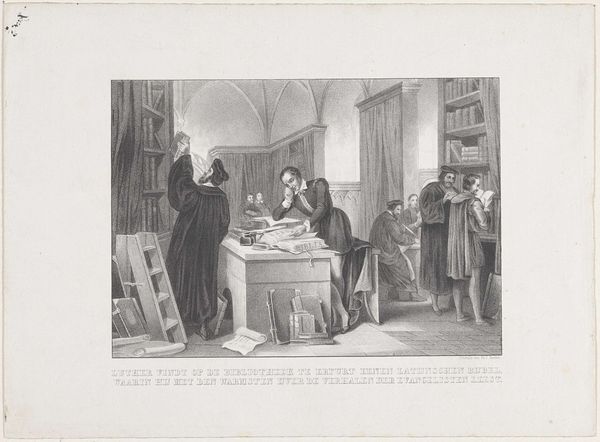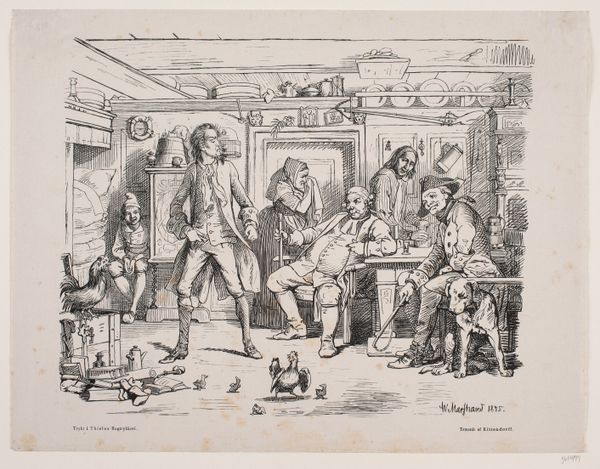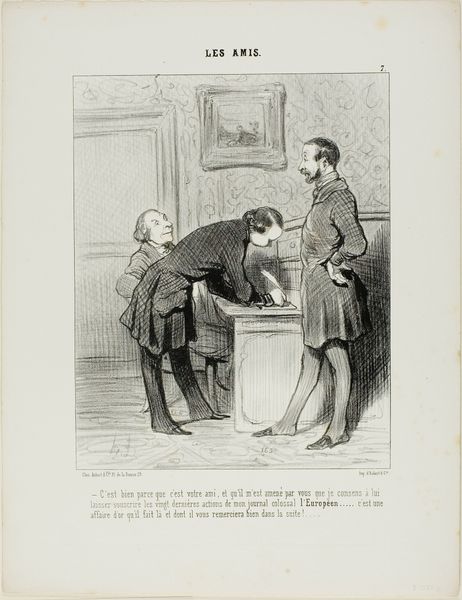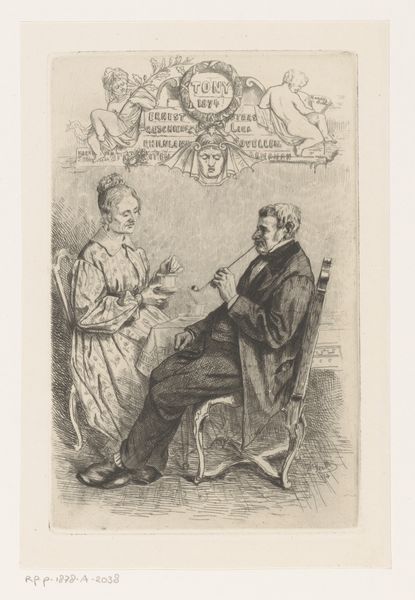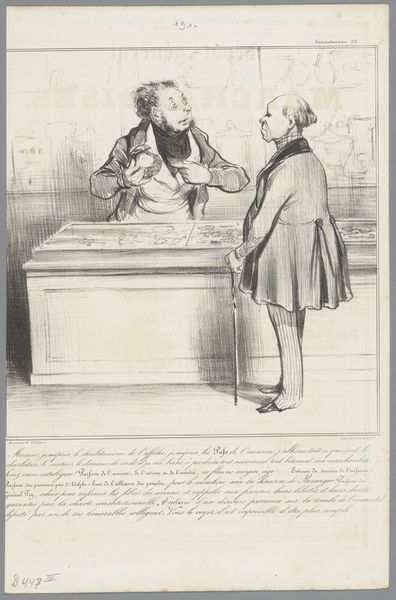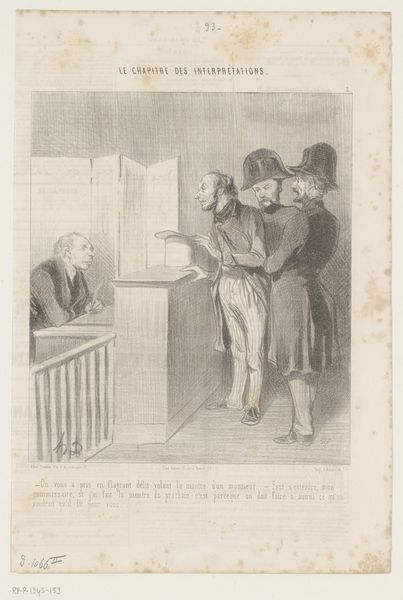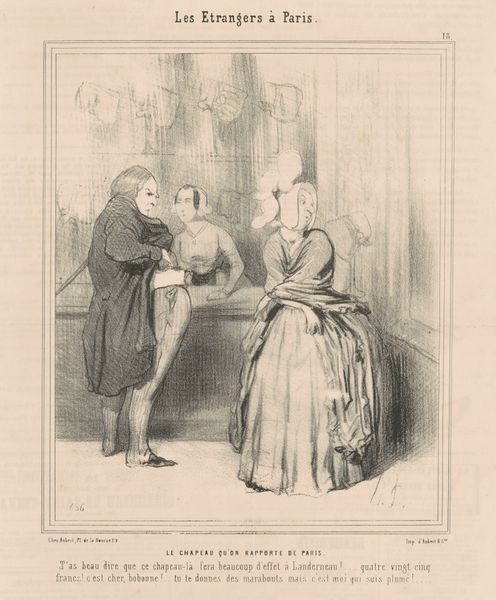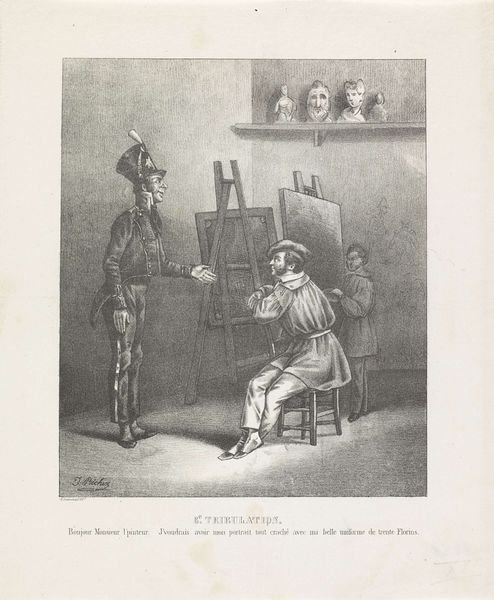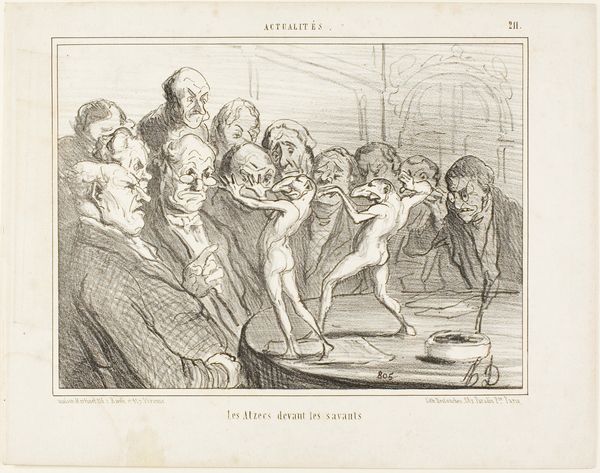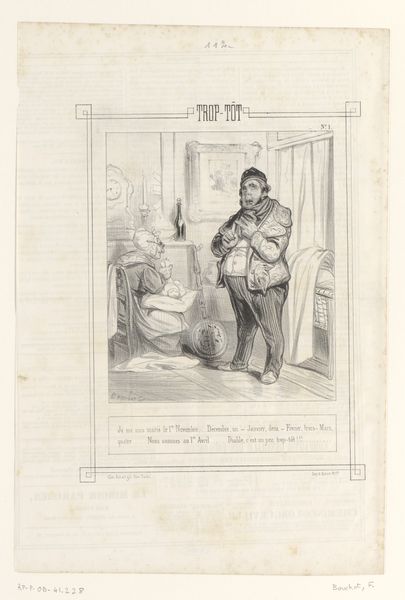
lithograph, print
#
portrait
#
lithograph
# print
#
genre-painting
#
history-painting
#
realism
Dimensions: height 260 mm, width 352 mm
Copyright: Rijks Museum: Open Domain
Editor: This is "Two Men at a Counter," a lithograph by Gustaaf Leonardus Adolf Amand, created sometime between 1867 and 1894. There is so much detail in this print – telescopes, globes, and two smartly dressed men. How do you interpret this work? Curator: Well, initially, it’s important to consider the socio-political implications behind the depiction. The Dutch text at the bottom reads "Twee joden weten wat een bril kost" ("Two Jews know what glasses cost."). This could be interpreted in the historical context of prevalent anti-Semitism, specifically with the idea that Jewish people are shrewd in business, especially about the price of goods. This piece may play into and thus perpetuate harmful stereotypes. Editor: Oh, I didn’t know that phrase had that connotation. That makes me see the print in a different light. So it’s not just a scene of two men, but potentially commentary—and biased commentary at that. Curator: Precisely. Consider the role of visual culture in reinforcing or challenging social biases. Lithographs like this were widely circulated. So how might this particular imagery have impacted its audience? It is an example of Realism portraying history or a broader social commentary of the era, right? Editor: I see what you mean! Understanding the cultural context behind the image is vital, isn’t it? It's a lot to take in. Curator: Indeed! It shifts our focus to the powerful intersection of art, society, and how such pieces both reflect and shape cultural perspectives. Editor: Thank you for sharing your insights! It made me think about art and society from a new angle.
Comments
No comments
Be the first to comment and join the conversation on the ultimate creative platform.

